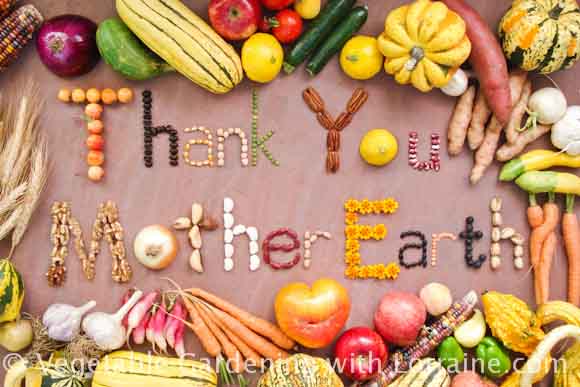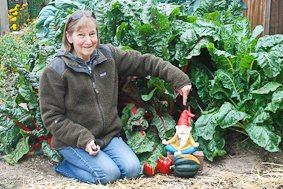| Back to Back Issues Page |
 |
|
Under the Arbor: Issue 21 November 21, 2021 |
Best Gifts for GardenersLike Oprah (well, okay, not really like Oprah), I have assembled a curated collection of My Favorite Things that I either own, or wish I owned, that would make wonderful gifts for any gardener. I'm not much into cutesy stuff, being more of a practical lover of durable, useful, quality things, so there's nothing on my list that falls into the "I saw it on TV" category. You can fantasy-shop (or click on the links to actually shop) for my highly-rated Favorite Things over at
Best Gifts for Gardeners.
Winter Wonderland UndergroundHere in the northern hemisphere the trees and perennials are taking their energies back undergrund for the winter. Let's follow them down into their safe haven from storms, and see what's going on down there.Leaves "turn color" when trees and shrubs sense the lessening light of fall and start disassembling their plant pigments so they can save and store sugars and other top-growth components down in their roots for the winter, under the frost layer. Chlorophyll is the first and most important plant pigment to go underground, which is why you then see what's left… the yellows, oranges, reds and bronzes of the anthocyanins, carotenoids, and xanthophylls. Each of these other pigments get broken down in turn and taken back down into the roots. Not only does the plant store these compounds for use the following spring, the compounds also act as a natural "antifreeze", preventing the plants' roots from freezing and bursting. What else is going on underground? It used to be thought that the bacteria, fungi, archaea, actinomycetes, and other members of the soil ecosystem froze solid and went dormant themselves over the winter, but we now know that's not true. Scientists in Sweden have shown that the soil ecosystem goes on digesting carbon right through the winter below (and to a lesser degree even within) the frost layer, turning those carbon compounds into stable humus that binds to and stores plant nutrients for future use. The more living plant roots you have in your soil (cover crops), and the more mulch there is on top, the more insulation the ground will have and the shallower the frost layer will be. A good deep early snow cover will also insulate the ground. I don't know about where you live, but here in Denver, global warming is drying us out, both summer and winter. My strategy in the fall is to plant a cover crop (this year it's annual ryegrass and field peas), cover it with a thin layer of straw/duck manure mix (lucky me), and let the crop grow up through the mulch to eventually be killed by frost. But the roots and the mulch will keep the microbial ecosystem alive and working underground, ready to spring into action in the spring (is that why it's called spring?) Anyway, roots are living, respiring things even through the "dead" of winter, as is the incredibly complex soil ecosystem. If you have a very dry winter, be sure to water trees, shrubs, and even the vegetable garden if you have a long stretch of days when its warm and the ground is completely thawed and dry.
Thanksgiving for the Earth, and All of LifeMost of us mark Thanksgiving by sharing a feast with family and friends, and mostly we do remember to give thanks for the many blessings that we have been given.I think it's always good to remember that Divine Love manifests itself in our lives in many ways, including through nature's bounty. I like to believe that all life has consciousness, and like to give thanks not only to Divinity, but to the living ecosystems and creatures that together make my own life possible. 
Have a wonderful Thanksgiving, and we'll see you on the winter solstice!
|
| Back to Back Issues Page |

